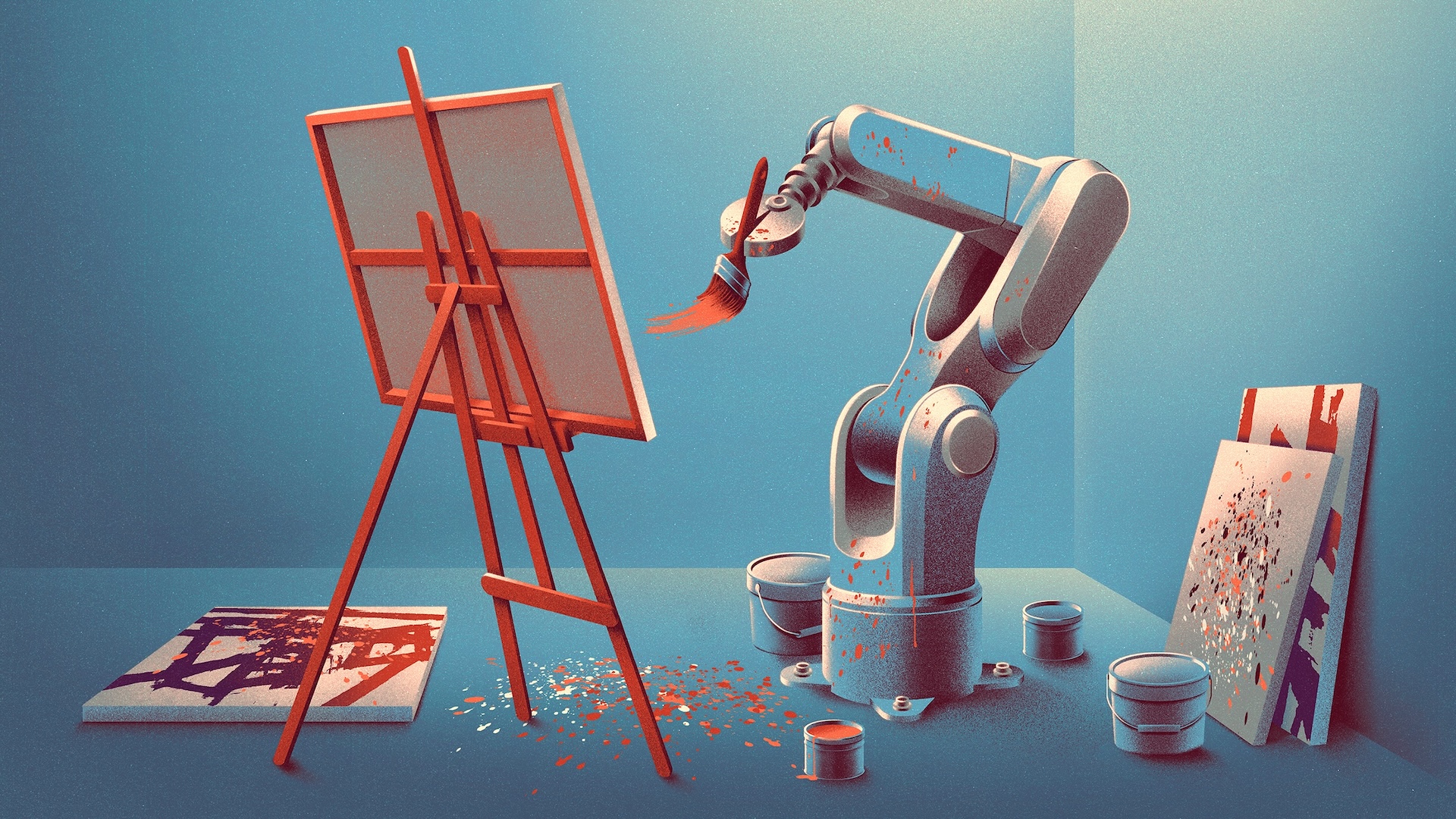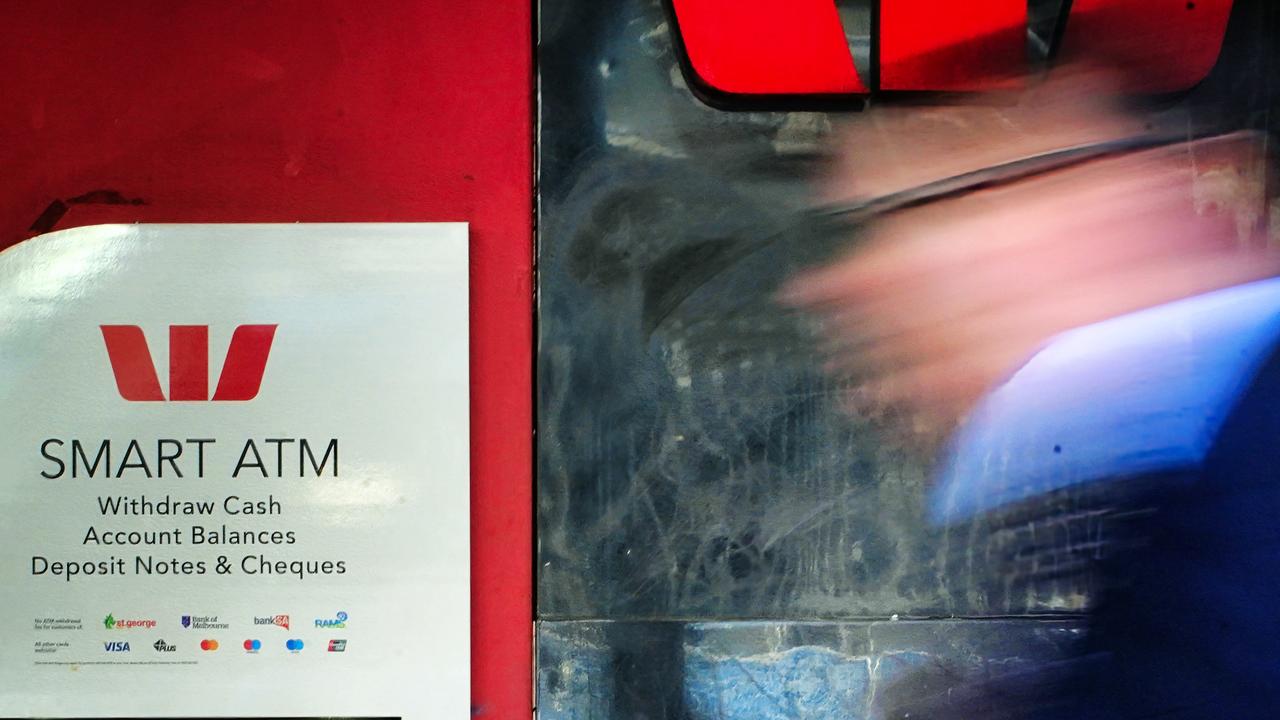By Webb Wright
Copyright livescience

Skip to main content
Close main menu
Live Science
Sign up to our newsletter
View Profile
Search Live Science
Planet Earth
Archaeology
Physics & Math
Human Behavior
Science news
Life’s Little Mysteries
Science quizzes
Newsletters
Story archive
Man regains vision by tooth to eye implant
5,000-year-old stone tomb in Spain
Abandoning daylight saving time
JWST discovers possible black hole star
Million-year-old skull from China rewrites human origins
Don’t miss these
Artificial Intelligence
Would outsourcing everything to AI cost us our ability to think for ourselves?
Artificial Intelligence
Why OpenAI’s solution to AI hallucinations would kill ChatGPT tomorrow
Artificial Intelligence
AI can’t solve these puzzles that take humans only seconds
Artificial Intelligence
Scientists asked ChatGPT to solve a math problem from more than 2,000 years ago — how it answered it surprised them
Artificial Intelligence
AI could use online images as a backdoor into your computer, alarming new study suggests
Artificial Intelligence
AI outsmarted 30 of the world’s top mathematicians at secret meeting in California
Artificial Intelligence
AI could soon think in ways we don’t even understand — evading our efforts to keep it aligned — top AI scientists warn
Artificial Intelligence
AI models can send subliminal messages that teach other AIs to be ‘evil,’ study claims
Artificial Intelligence
The more advanced AI models get, the better they are at deceiving us — they even know when they’re being tested
This obscure, 80-year-old machine might be the key to unlocking the full potential of AI today
Artificial Intelligence
AI chatbots oversimplify scientific studies and gloss over critical details — the newest models are especially guilty
Artificial Intelligence
OpenAI’s ChatGPT agent can control your PC to do tasks on your behalf — but how does it work and what’s the point?
Artificial Intelligence
New AI system can ‘predict human behavior in any situation’ with unprecedented degree of accuracy, scientists say
Quantum Physics
‘Paraparticles’ would be a third kingdom of quantum particle
Artificial Intelligence
There are 32 different ways AI can go rogue, scientists say — from hallucinating answers to a complete misalignment with humanity
Artificial Intelligence
Researchers uncover hidden ingredients behind AI creativity
Webb Wright
27 September 2025
Image generators are designed to mimic their training data, so where does their apparent creativity come from? A recent study suggests that it’s an inevitable by-product of their architecture.
When you purchase through links on our site, we may earn an affiliate commission. Here’s how it works.
(Image credit: Adrián Astorgano for Quanta Magazine)
We were once promised self-driving cars and robot maids. Instead, we’ve seen the rise of artificial intelligence systems that can beat us in chess, analyze huge reams of text and compose sonnets. This has been one of the great surprises of the modern era: physical tasks that are easy for humans turn out to be very difficult for robots, while algorithms are increasingly able to mimic our intellect.
Another surprise that has long perplexed researchers is those algorithms’ knack for their own, strange kind of creativity.
Diffusion models, the backbone of image-generating tools such as DALL·E, Imagen and Stable Diffusion, are designed to generate carbon copies of the images on which they’ve been trained. In practice, however, they seem to improvise, blending elements within images to create something new — not just nonsensical blobs of color, but coherent images with semantic meaning. This is the “paradox” behind diffusion models, said Giulio Biroli, an AI researcher and physicist at the École Normale Supérieure in Paris: “If they worked perfectly, they should just memorize,” he said. “But they don’t — they’re actually able to produce new samples.”
You may like
Would outsourcing everything to AI cost us our ability to think for ourselves?
Why OpenAI’s solution to AI hallucinations would kill ChatGPT tomorrow
AI can’t solve these puzzles that take humans only seconds
To generate images, diffusion models use a process known as denoising. They convert an image into digital noise (an incoherent collection of pixels), then reassemble it. It’s like repeatedly putting a painting through a shredder until all you have left is a pile of fine dust, then patching the pieces back together. For years, researchers have wondered: If the models are just reassembling, then how does novelty come into the picture? It’s like reassembling your shredded painting into a completely new work of art.
Now two physicists have made a startling claim: It’s the technical imperfections in the denoising process itself that leads to the creativity of diffusion models. In a paper that will be presented at the International Conference on Machine Learning 2025, the duo developed a mathematical model of trained diffusion models to show that their so-called creativity is in fact a deterministic process — a direct, inevitable consequence of their architecture.
By illuminating the black box of diffusion models, the new research could have big implications for future AI research — and perhaps even for our understanding of human creativity. “The real strength of the paper is that it makes very accurate predictions of something very nontrivial,” said Luca Ambrogioni, a computer scientist at Radboud University in the Netherlands.
Mason Kamb, a graduate student studying applied physics at Stanford University and the lead author of the new paper, has long been fascinated by morphogenesis: the processes by which living systems self-assemble.
Sign up for the Live Science daily newsletter now
Get the world’s most fascinating discoveries delivered straight to your inbox.
Contact me with news and offers from other Future brandsReceive email from us on behalf of our trusted partners or sponsorsBy submitting your information you agree to the Terms & Conditions and Privacy Policy and are aged 16 or over.
One way to understand the development of embryos in humans and other animals is through what’s known as a Turing pattern, named after the 20th-century mathematician Alan Turing. Turing patterns explain how groups of cells can organize themselves into distinct organs and limbs. Crucially, this coordination all takes place at a local level. There’s no CEO overseeing the trillions of cells to make sure they all conform to a final body plan. Individual cells, in other words, don’t have some finished blueprint of a body on which to base their work. They’re just taking action and making corrections in response to signals from their neighbors. This bottom-up system usually runs smoothly, but every now and then it goes awry — producing hands with extra fingers, for example.
When the first AI-generated images started cropping up online, many looked like surrealist paintings, depicting humans with extra fingers. These immediately made Kamb think of morphogenesis: “It smelled like a failure you’d expect from a [bottom-up] system,” he said.
AI researchers knew by that point that diffusion models take a couple of technical shortcuts when generating images. The first is known as locality: They only pay attention to a single group, or “patch,” of pixels at a time. The second is that they adhere to a strict rule when generating images: If you shift an input image by just a couple of pixels in any direction, for example, the system will automatically adjust to make the same change in the image it generates. This feature, called translational equivariance, is the model’s way of preserving coherent structure; without it, it’s much more difficult to create realistic images.
You may like
Would outsourcing everything to AI cost us our ability to think for ourselves?
Why OpenAI’s solution to AI hallucinations would kill ChatGPT tomorrow
AI can’t solve these puzzles that take humans only seconds
In part because of these features, diffusion models don’t pay any attention to where a particular patch will fit into the final image. They just focus on generating one patch at a time and then automatically fit them into place using a mathematical model known as a score function, which can be thought of as a digital Turing pattern.
Researchers long regarded locality and equivariance as mere limitations of the denoising process, technical quirks that prevented diffusion models from creating perfect replicas of images. They didn’t associate them with creativity, which was seen as a higher-order phenomenon.
They were in for another surprise.
Made locally
Kamb started his graduate work in 2022 in the lab of Surya Ganguli, a physicist at Stanford who also has appointments in neurobiology and electrical engineering. OpenAI released ChatGPT the same year, causing a surge of interest in the field now known as generative AI. As tech developers worked on building ever-more-powerful models, many academics remained fixated on understanding the inner workings of these systems.
Mason Kamb (left) and Surya Ganguli found that the creativity in diffusion models is a consequence of their architecture. (Image credit: Charles Yang)
To that end, Kamb eventually developed a hypothesis that locality and equivariance lead to creativity. That raised a tantalizing experimental possibility: If he could devise a system to do nothing but optimize for locality and equivariance, it should then behave like a diffusion model. This experiment was at the heart of his new paper, which he wrote with Ganguli as his co-author.
Kamb and Ganguli call their system the equivariant local score (ELS) machine. It is not a trained diffusion model, but rather a set of equations which can analytically predict the composition of denoised images based solely on the mechanics of locality and equivariance. They then took a series of images that had been converted to digital noise and ran them through both the ELS machine and a number of powerful diffusion models, including ResNets and UNets.
The results were “shocking,” Ganguli said: Across the board, the ELS machine was able to identically match the outputs of the trained diffusion models with an average accuracy of 90% — a result that’s “unheard of in machine learning,” Ganguli said.
The results appear to support Kamb’s hypothesis. “As soon as you impose locality, [creativity] was automatic; it fell out of the dynamics completely naturally,” he said. The very mechanisms which constrained diffusion models’ window of attention during the denoising process — forcing them to focus on individual patches, regardless of where they’d ultimately fit into the final product — are the very same that enable their creativity, he found. The extra-fingers phenomenon seen in diffusion models was similarly a direct by-product of the model’s hyperfixation on generating local patches of pixels without any kind of broader context.
Experts interviewed for this story generally agreed that although Kamb and Ganguli’s paper illuminates the mechanisms behind creativity in diffusion models, much remains mysterious. For example, large language models and other AI systems also appear to display creativity, but they don’t harness locality and equivariance.
“I think this is a very important part of the story,” Biroli said, “[but] it’s not the whole story.”
Creating creativity
For the first time, researchers have shown how the creativity of diffusion models can be thought of as a by-product of the denoising process itself, one that can be formalized mathematically and predicted with an unprecedentedly high degree of accuracy. It’s almost as if neuroscientists had put a group of human artists into an MRI machine and found a common neural mechanism behind their creativity that could be written down as a set of equations.
RELATED STORIES
—Why do AI chatbots use so much energy?
—AI slop is on the rise — what does it mean for how we use the internet?
—Scientists just developed a new AI modeled on the human brain — it’s outperforming LLMs like ChatGPT at reasoning tasks
The comparison to neuroscience may go beyond mere metaphor: Kamb and Ganguli’s work could also provide insight into the black box of the human mind. “Human and AI creativity may not be so different,” said Benjamin Hoover, a machine learning researcher at the Georgia Institute of Technology and IBM Research who studies diffusion models. “We assemble things based on what we experience, what we’ve dreamed, what we’ve seen, heard or desire. AI is also just assembling the building blocks from what it’s seen and what it’s asked to do.” Both human and artificial creativity, according to this view, could be fundamentally rooted in an incomplete understanding of the world: We’re all doing our best to fill in the gaps in our knowledge, and every now and then we generate something that’s both new and valuable. Perhaps this is what we call creativity.
Original story reprinted with permission from Quanta Magazine, an editorially independent publication supported by the Simons Foundation.
Webb Wright
Webb Wright is a journalist based in Brooklyn, New York, who writes about technology and the mind. He’s an alumnus of the Columbia University Graduate School of Journalism and a former Ferriss – UC Berkeley Psychedelic Journalism fellow.
You must confirm your public display name before commenting
Please logout and then login again, you will then be prompted to enter your display name.
Would outsourcing everything to AI cost us our ability to think for ourselves?
Why OpenAI’s solution to AI hallucinations would kill ChatGPT tomorrow
AI can’t solve these puzzles that take humans only seconds
Scientists asked ChatGPT to solve a math problem from more than 2,000 years ago — how it answered it surprised them
AI could use online images as a backdoor into your computer, alarming new study suggests
AI outsmarted 30 of the world’s top mathematicians at secret meeting in California
Latest in Artificial Intelligence
Why OpenAI’s solution to AI hallucinations would kill ChatGPT tomorrow
Scientists asked ChatGPT to solve a math problem from more than 2,000 years ago — how it answered it surprised them
‘There’s no shoving that genie back in the bottle’: Readers believe it’s too late to stop the progression of AI
AI could use online images as a backdoor into your computer, alarming new study suggests
Why do AI chatbots use so much energy?
AI slop is on the rise — what does it mean for how we use the internet?
Latest in News
Is acetaminophen safe in pregnancy? Here’s what the science says.
Mysterious cosmic explosion can’t be explained, scientists say
Science news this week: A breakthrough cure for Huntington’s disease and a fast-growing black hole that breaks physics
Amazon rainforest trees are resisting climate change by getting fatter from CO2 in the atmosphere
Scientists unveil world’s first quantum computer built with regular silicon chips
‘If there is a space race, China’s already winning it’: NASA unlikely to bring Mars samples back to Earth before China does, experts say
LATEST ARTICLES
Science history: Rosetta stone is deciphered, opening a window into ancient Egyptian civilization — Sept. 27, 1822
Scientists asked ChatGPT to solve a math problem from more than 2,000 years ago — how it answered it surprised them
Science news this week: A breakthrough cure for Huntington’s disease and a fast-growing black hole that breaks physics
It’s official: Humans have found 6,000 planets beyond our solar system
Why does medicine taste bad?
Live Science is part of Future US Inc, an international media group and leading digital publisher. Visit our corporate site.
Contact Future’s experts
Terms and conditions
Privacy policy
Cookies policy
Accessibility Statement
Advertise with us
Web notifications
Editorial standards
How to pitch a story to us
Future US, Inc. Full 7th Floor, 130 West 42nd Street,
Please login or signup to comment
Please wait…



